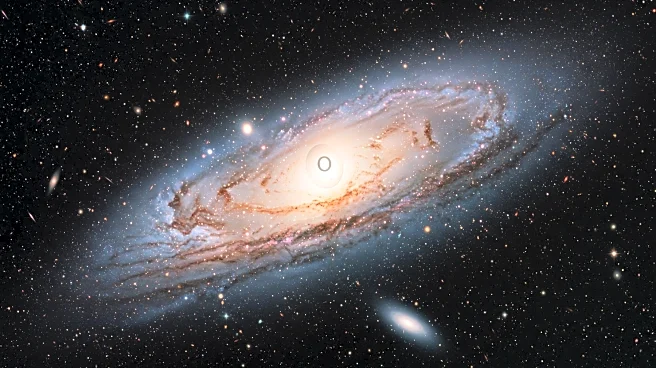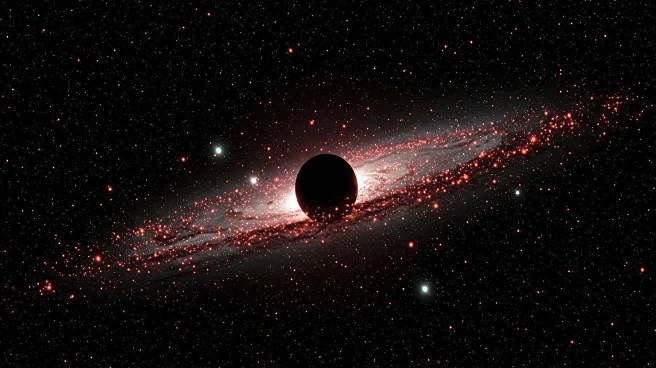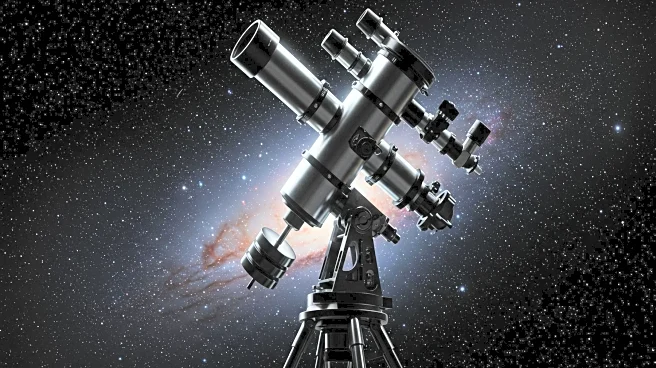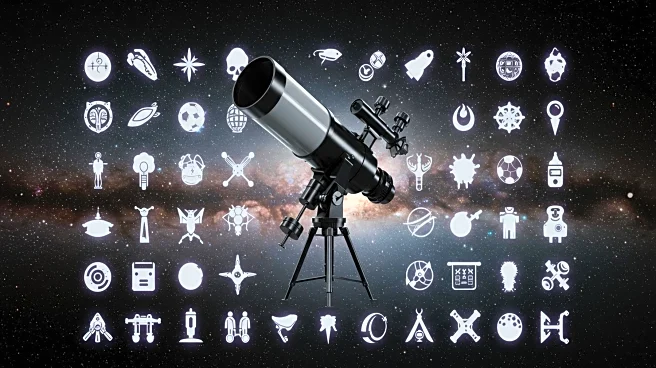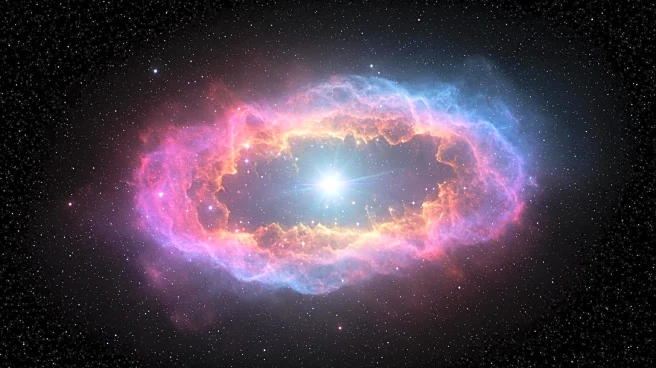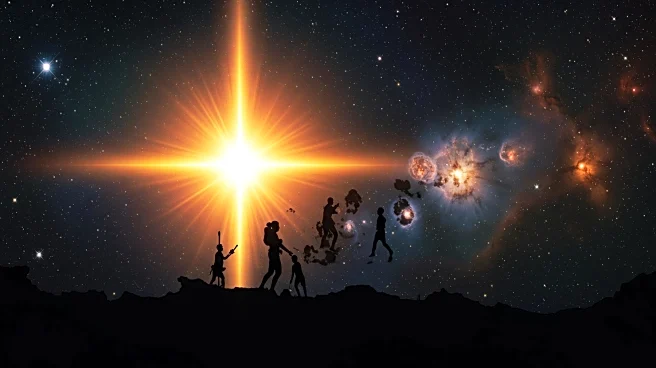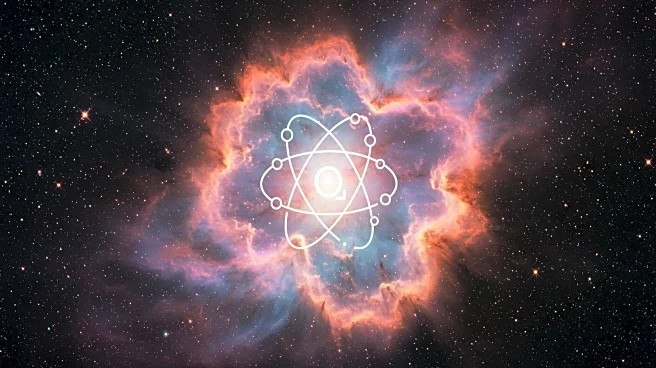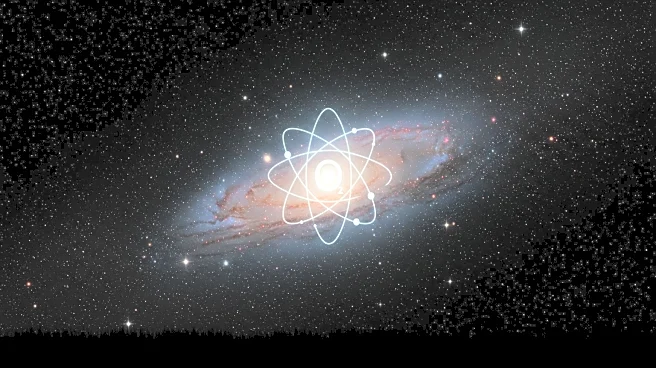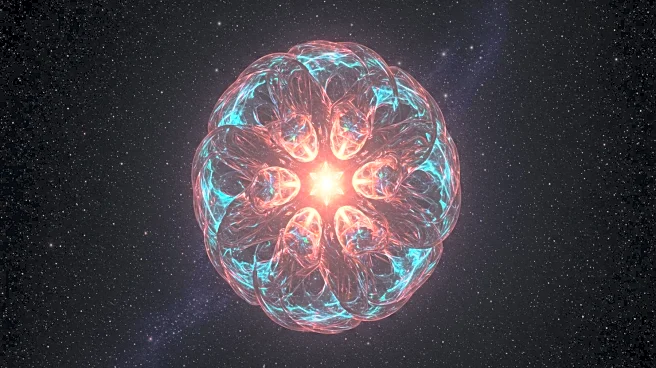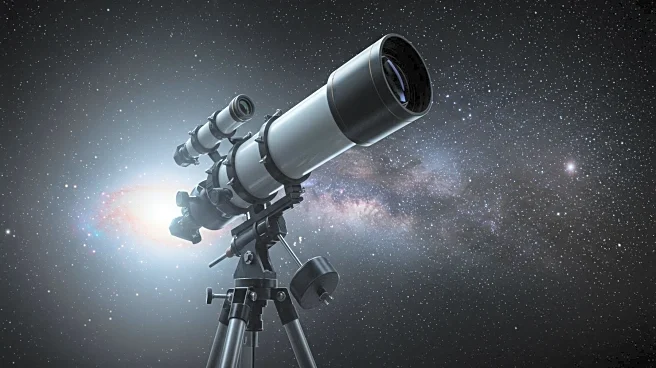What is the story about?
What's Happening?
Astronomers have made a groundbreaking discovery by detecting oxygen in the galaxy JADES-GS-z14-0, the most distant known galaxy, which dates back to just 300 million years after the Big Bang. This discovery, published in Astronomy & Astrophysics, was made possible through observations from the Atacama Large Millimeter/submillimeter Array (ALMA) and the James Webb Space Telescope (JWST). The presence of oxygen, a key element for cosmic evolution, suggests that complex chemical processes were already underway much earlier than previously thought. The galaxy's light, which traveled 13.4 billion years to reach Earth, provides a direct glimpse into a period once considered too young for such heavy elements to exist. The analysis revealed a high level of gas-phase metallicity, indicating that at least two generations of stars had already lived and died by the time this galaxy emitted the light now being observed.
Why It's Important?
This discovery has significant implications for our understanding of the early universe and the formation of galaxies. The presence of oxygen in such an ancient galaxy challenges existing models of galaxy formation, which assumed a slower, more gradual process of chemical enrichment. The findings suggest that galaxies like JADES-GS-z14-0 underwent rapid and efficient star formation shortly after the universe's dark ages. This could mean that the early universe was more dynamic and complex than previously believed, with large-scale galactic structures emerging much earlier. The discovery also raises questions about the role of dark matter halos and the potential for ionizing photons to escape into the intergalactic medium, which could have influenced the epoch of reionization.
What's Next?
Future research will focus on further exploring the chemical composition of early galaxies. Upcoming JWST spectroscopic campaigns aim to detect other elements like carbon and nitrogen in the same region, while higher-frequency ALMA observations will seek to capture faint dust emissions. The Extremely Large Telescope (ELT) will also play a crucial role in resolving smaller star-forming clumps, helping to determine whether JADES-GS-z14-0 is an anomaly or part of a broader cosmic trend. These efforts will provide deeper insights into the early universe and help refine current cosmological models.
Beyond the Headlines
The discovery of oxygen in JADES-GS-z14-0 compresses the early cosmic timeline, suggesting that galaxies may have evolved through rapid growth spurts rather than slow hierarchical buildup. This challenges long-held assumptions about stellar evolution and feedback processes, prompting a reevaluation of the nature of dark matter halos and the dynamics of early galactic ecosystems. As astronomers continue to uncover more about the early universe, these findings could lead to a fundamental shift in our understanding of cosmic evolution.
AI Generated Content
Do you find this article useful?
